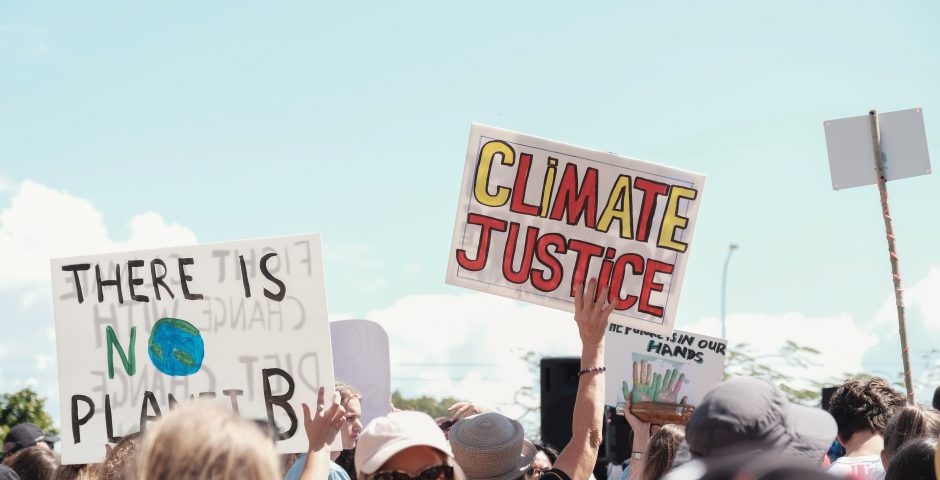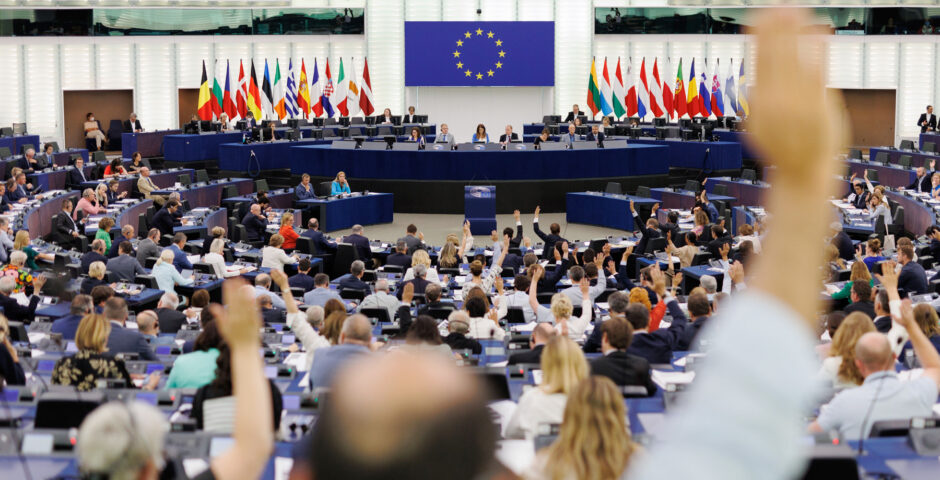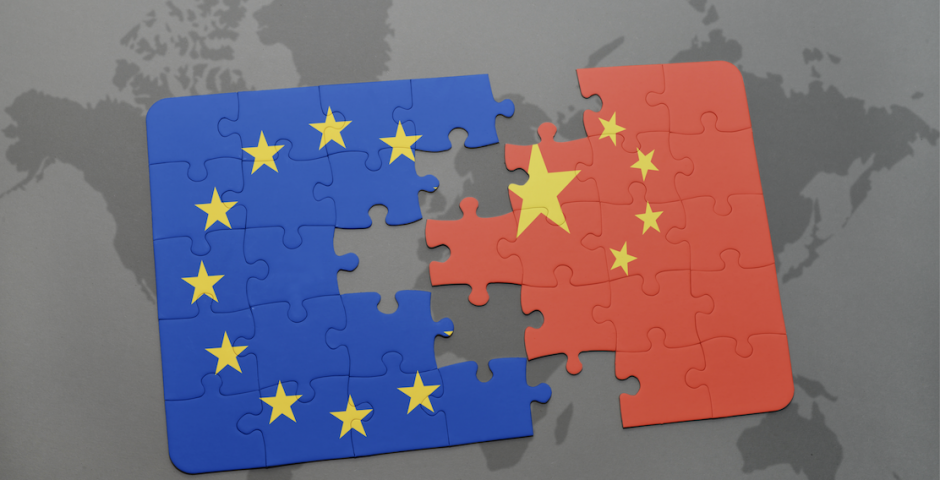Where is the European Environmental Justice movement?

The relationship between climate change, racism and social inequality.
The story begins in Warren County in 1982. Warren is a small county in the United States and is situated in the state of North Carolina. The county had a population of 16.232 people according to the 1980 census and is most famous for its historical role in the tobacco and cotton industry. Warren was a place like every other in the American Southeast and perfectly unremarkable before it became the centre of national media attention after a decision made by the State of North Carolina.
David vs. Goliath
After careful consideration, Warren County was named as the new location for a landfill. An important detail is that this landfill would accept PCB-contaminated soil. PCB is short for polychlorinated biphenyl, a toxic chemical which can have serious effects on human health and the environment that can end up in soil after illegal waste dumping. The soil needs to be cleaned up and stored somewhere and Warren was deemed the ideal location to do that.
As the tobacco and cotton might already have hinted, Warren was, and still is, the home of a large African American community. The 1980 census shows that 66% of the population of Warren County was black and that the mean family income of the county was at $10.367 (corrected for inflation this would come down to $33.354 in today’s money). Warren was thus the home of families who were predominantly part of an ethnic minority and from lower-income households. The decision to place a toxic landfill in a predominantly black community sparked intense protests which led to the arrest of over 500 people. This unfortunately did not prevent the construction of the PCB landfill: the landfill was built and was in use for decades before closing down in 2004.
Warren was certainly not the first community that sensed that the environmental degradation of their neighbourhood could be connected to racism and income. For decades people had protested infrastructure projects with high health hazards that for some reason only seemed to pop up in lower-income areas. Believing this is one thing, proving that there is an actual correlation was much harder which is why
The protest in Warren was certainly not the first time that people sensed that there might be a link between environmental degradation on one hand and social and racial inequality on the other. Local groups from similar places like Warren had protested the pollution of their communities long before the 1982 protest. Many residents of low-income and minority communities across the country had believed for a long time that their economic situation and racial backgrounds might motivate a bias to designate their places of residence as the homes of toxic waste facilities and other hazardous industrial activities.
The start of a movement
What made the Warren story so special was the fact that the protest and the message of the protesters had received national media attention. Other communities who had experienced similar things were empowered by the protests in Warren and this resulted in these local groups coming together into one large movement: the Environmental Justice Movement (EJM). This gave these marginalised communities the power to put their message on the country’s political agenda and sparked scientific research into the links between environmental degradation, racism and social inequality. It was not long before scientific evidence of this link was found. Study after study showed that the EJM was right: social status and racial background appear to be the two most important factors when it comes to environmental damage and pollution in residential areas: the most polluted neighbourhoods are those with predominantly lower-income housing and with a high percentage of minorities living there. In other words, people who come from a marginalised group within society are more likely to experience the negative effects of environmental pollution.
Today, Environmental Justice has become a household name in the US. Environmental Justice is a comprehensive concept described as:
‘the fair treatment and meaningful involvement of all people, regardless of race, ethnicity, income, nationality or level of education, in the development, implementation and enforcement of environmental laws, regulations and policies.’
The EJM has recognised that the bias against poorer communities and minorities can only be stopped if these people are given a voice and can actively participate and decide on policies related to the environment and climate change. EJM itself has generated an enormous following over the past decades; countless books have been written about the phenomenon, the subject can be studied at several American universities, and climate justice is being addressed during the drafting process of new climate policies. Every American is to some extent aware of the unfair relationship between environmental damage and social background. However, the same cannot be said of Europeans. Within Europe, climate change and environmental degradation have been a hot topic for years. Especially since the announcement of the Green Deal, sustainability has become a priority for the European Commission. However, the realisation that climate change affects some people more than others has only just now begun to enter the European environmentalism debate.
Thanks to the extensive research that has been done on this subject on the other side of the ocean, we now know how the relationship between climate change and social inequality works. Simply put, there are three larger developments going on in this area:
- Marginalised groups are experiencing (as Warren has shown) greater exposure to the effects of environmental pollution and climate change.
- Sensitivity to this exposure will only increase in the coming years because of the worsening effects of climate change, making it increasingly difficult to recover.
- Climate policy in many cases contributes to reinforcing social inequality within and between countries.
Breathing is a luxury
Marginalised groups in Europe are also at greater risk of being affected by the negative effects of environmental degradation. The most vulnerable population groups consequently live in areas of low environmental quality. Think of residential areas next to highways or near industrial areas. This has a huge impact on the health and quality of life of the residents as the air quality of these neighbourhoods is low. At the same time, these are the same neighbourhoods where the average income is systematically below the national average. The fact that living in these kinds of neighbourhoods can have far-reaching consequences is evident from the figures released by Lung Foundation Netherlands. In this country, one in every five cases of childhood asthma is caused by air pollution and 10% of lung cancer cases among Dutch patients appears to have the same cause.
What serious consequences this can have is evident from the story of six-year-old Noëlle that was published in the Dutch media this week. Noëlle is asthmatic, but her situation deteriorated sharply when, after her parents’ divorce, she and her mother moved from Rotterdam to Rozenburg, a village in the Rotterdam port area. In an interview in Dutch newspaper Trouw, her mother stated how happy she was to find social housing in the Rijnmond region, because with the current housing crisis in the country this can be considered a miracle. The village is surrounded on both sides by port industry and motorways, which contributes greatly to the poor air quality in the area. Since moving to Rozenburg Noëlle has been admitted to the ICU three times after a serious attack. As a result of the covid lockdown which resulted in her staying home for a long period of time her doctors discovered that Noëlle’s respiratory issues were linked to air pollution: each time Noëlle was admitted to the hospital, the air around Rozenburg had elevated levels of nitrogen.
Stories like Noëlle’s are not isolated incidents. In 2013, nine-year-old Ella Kissi-Debrah died in London from a severe asthma attack that was also caused by air pollution. This particular attack occurred when the worst air quality ever was measured in the city. Later investigation revealed that every time Ella was admitted to the hospital with respiratory problems, except once, there were elevated levels of pollution in the air, 27 times in total. Ella’s mother filed a lawsuit to have her cause of death officially changed from ‘respiratory failure’ to ‘air pollution’ which she won at the end of last year. This makes her the first person in the world to officially have died from air pollution. The coroner who wrote the report on Ella’s death called her ‘a canary in a coal mine’. In his view, her death is a warning for anyone living in polluted areas. What Ella and Noëlle have in common besides asthma is that they both are POC (people of colour) and lived in neighbourhoods with predominantly social housing aimed at the lower housing segment.
In recent years, stories like Ella’s and Noëlle’s have led to more attention being paid in Europe to the relationship between social inequality, environmental pollution and the impact this has on people, but a large movement like the EJM in America is still missing in 2021. The lack of awareness within Europe about Environmental Justice also means that the link between health and a deteriorating living environment is often missed. This also means that little is being done to protect marginalised people in particular from the degradation of their neighbourhoods.
The role of policy-makers
At the same time, the EU aims to become the frontrunner of sustainability in the world and European countries have already taken significant steps at the national level to combat climate change. But research on Environmental Justice has also shown that policies aimed at limiting the impact of climate change can actually contribute to social inequality. So how does that work in practice? Let’s take electric cars as an example.
Across the EU, national and local governments have introduced policies to lower the threshold for consumers to purchase electric vehicles. These include among other subsidies, tax breaks, parking fee exemptions, reserved parking spaces, free installation of charging points, and so on. The Netherlands is one of these many countries that subsidises electric cars for consumer use. For the period 2020 – 2025, a total of €14,608,000 has been made available for people making the switch from fuel to electric. For a new electric car someone will receive a subsidy of €4000 and if the car is second hand you will receive half of that amount. A condition of the subsidy, however, is that the car has a minimum price of €12,000. A study has shown that only the richest 21% of the country can afford to buy an electric car and thus benefit from the subsidy. The Dutch government wants to encourage more environmentally friendly behaviour, but has excluded a large proportion of its own citizens from participating in these plans. In addition to that, these citizens have indirectly contributed to the subsidy through taxes, but cannot benefit from it themselves.
This example is again not an isolated incident. The fact is that higher income groups generally have better access to environmental benefits; from subsidies to tax breaks. Additionally, the bill for these policies is also disproportionately paid by the same people who do not benefit from them. At present, the bottom 10% of Dutch households contribute 3.5 times as much of their disposable income to environmental policy as higher income groups (5.1% versus 1.5%). This difference is expected to increase with the introduction of more environmental policies. In 2050, the richest ten percent are expected to spend 10.2% of their disposable income on costs resulting from environmental policy, while the poorest ten percent will spend 17.1% of their disposable income on these same costs.
What’s next?
Fortunately, the EU has also realised that combating an environmental crisis should not be accompanied by the creation of a social crisis. An important part of the Green Deal is the so-called Just Transition Fund. This fund – which has a staggering €17.5 billion at its disposal – is intended to protect vulnerable communities from the economic consequences of the green transition. It remains however to be seen whether this amount can help close the social gap. At the end of the day, Member States remain responsible for tapping into the fund and drawing up a transition strategy. When governments are insufficiently aware of the impact that climate policy can have on social inequality in their countries, the €17.5 billion may very soon lose its effectiveness. Perhaps it is time, 39 years after the demonstrations in Warren, to properly open the debate here in Europe on the relationship between social inequality, racism and environmental pollution.
Linda den Bol has obtained a Bachelor’s degree in History from Radboud University and is currently pursuing her dual Master’s degree in European Governance at both Masaryk University and Utrecht University.
Image: Shutterstock




